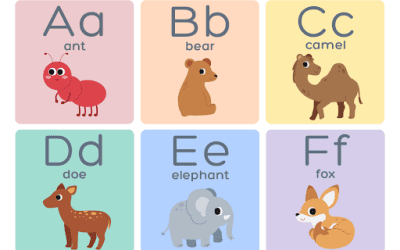Aligning district English Language Arts curriculum to Common Core Standards can be challenging, particularly if a teacher is using curriculum that’s based on national and state standards adopted prior to Common Core. In these instances, teachers are left grasping for straws, rummaging for quality lessons that meet the standards. However, there’s always an authentic opportunity to connect Common Core Standards to the current literature that students are reading.
Common Core Standard: CCSS.ELA-LITERACY.RL.3.3
Describe characters in a story (e.g., their traits, motivations, or feelings) and explain how their actions contribute to the sequence of events.
For instance, for the standard CCSS.ELA-LITERACY.RL.3.3, students are required to show how a character’s traits, motivations, and feelings result in actions and the sequence of events. On the surface, this may appear simple for students, because identifying a character trait is a standard introduced in previous grades. When first introduced to this standard, students often produce work that skims the surface, offering more of a simple cause-effect relationship. This is likely due to third grade being a critical year for literacy development: Students are transiting from learning-to-read to reading-to-learn. In order for students to develop a high level of understanding, students must demonstrate the ability to apply the skill of character analysis on a rigorous level.
For instance, let’s examine the novel Stone Fox and its main character, Little Willy. Spoiler alert: In a nutshell, this novel is about a young boy named Little Willy who lives with a grandfather who takes ill and suddenly stops speaking. After discovering evidence of financial distress, Little Willy learns that if his grandfather doesn’t pay taxes he’ll lose the farm. Determined to pay the debt, Little Willy develops a grand scheme to enter a dogsled race with his loyal dog, Searchlight. If Little Willy were to win first place, he’d be awarded $500, which is the amount his grandfather owes in taxes. Summing up the end isn’t necessary in this case, as I don’t feel it’s necessary to wipe tears away. So, let’s get back to focusing on the standard . . .
Take a look at this characterization question based on Stone Fox: “Describe Little Willy’s character traits. How do his character traits influence the main events in the book?”
A third-grade response indicating a student has difficulty applying characterization analysis might look like this: Little Willy’s character could be described as sad, and since Little Willy was sad, it caused him to enter a dog sled race. With this type of ambiguous response, the teacher is left wondering if the student understands how to apply the standard, because key details from the plot are overlooked.
An evidence-supported third-grade answer could include something such as: Little Willy’s character can be described as devastated and determined. He was upset because he learned that his grandfather was sick. When Little Willy learned that his grandfather’s illness was because he had no money to pay the taxes on the farm, Little Willy decided to enter a dog sled race. Little Willy hoped he would win the first place $500 and use the money to pay his grandfather’s taxes.
With this clear, evidence-based response the teacher has a better sense that the student has an understanding of character traits and the influence of actions in the story.
Here are some strategies for developing the rigor of your student’s work on this standard in your own classroom:
- Character log. Using the class read-aloud, keep a character log. After each chapter reading, discuss the main character’s traits/motivations/feelings, and explain how the actions influence the events that follow. This can be completed in many ways. A peer or group discussion is a possible format. For more individual accountability, an anchor chart could be placed as a visual for all students to see, and students could add their own response to a specific question on the chart using sticky notes. Another engaging tool for implementing this whole-class activity is to incorporate iPads and a SMART Board for back-channeling discussion. In this type of real-time discussion, students use iPads to communicate and their comments are posted on the SMART Board. Using a character log in this format would allow for instant feedback.
- Mark up the text. Display the text using a SMART Board, e-book, or photocopy. Have the student highlight the evidence that proves the traits/motivations/feelings the character possesses. Next, have the student highlight the sequence of events that were caused because of the trait.
- Create a game. Using their own texts, have students identify key character traits/motivations/feelings and explain how these traits influenced key events in the text. Students can record this information on index cards. Using Stone Fox as an example, a student could write the trait motivated on an index card. On another index card, the student could record something such as Little Willy entered the dog sled race hoping to win first place. The student would create four or five additional examples like this and then spread all of the cards out in front of a peer. The peer would have to match the character traits with the events. This activity is a practical and fun way for teachers to determine if students can apply the standard, because in order for classmates to successfully identify the correct character trait and action of events, each student must use rich evidence when identifying traits and following events.
- Oral response (for formative assessment). If a student is proficient in reading but the student’s writing skills fall below the grade-appropriate level, having a one-on-one discussion about character analysis would be appropriate to access the student’s true ability to apply the standard.
How have you used character trait lessons in your classroom?




